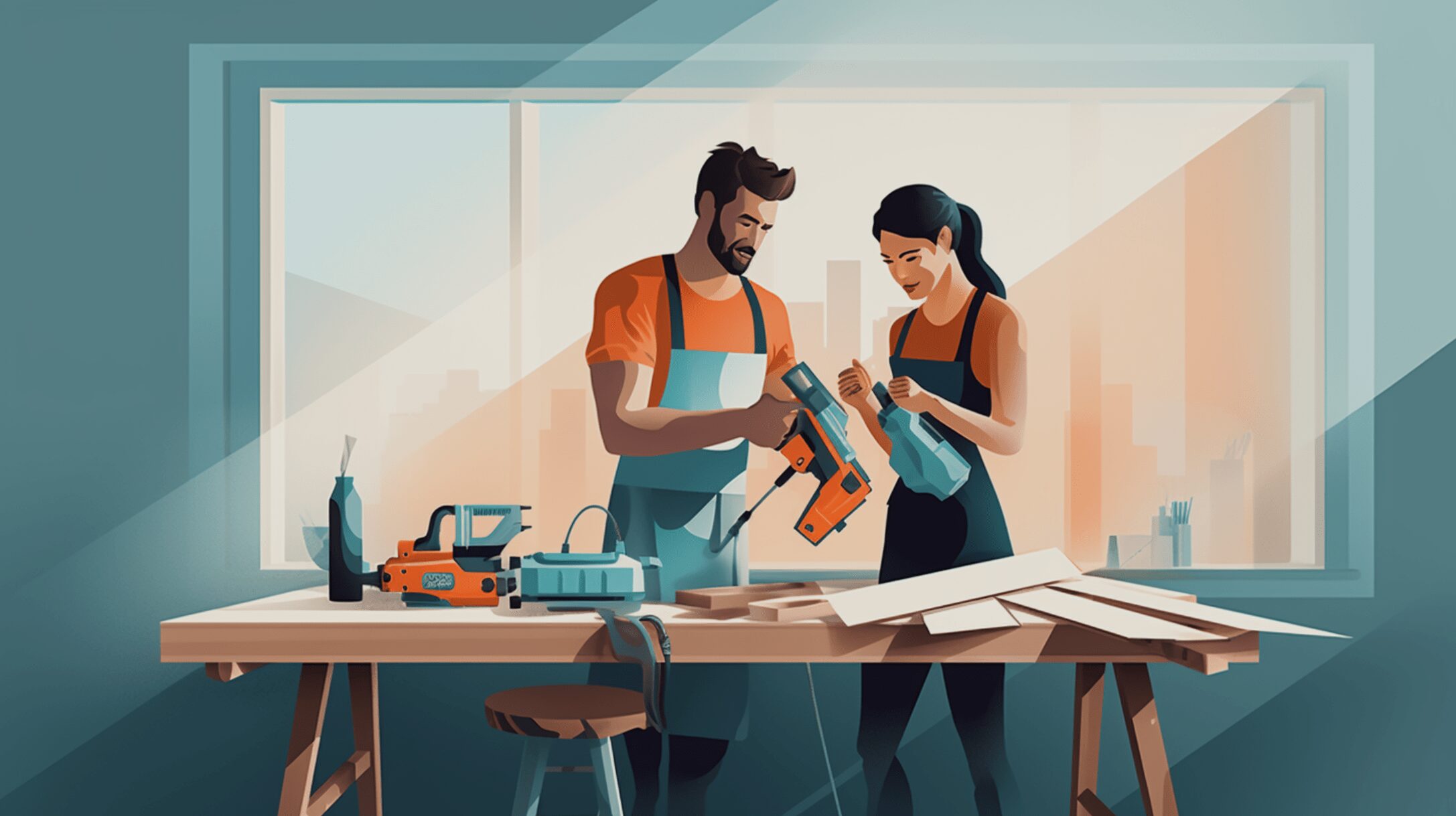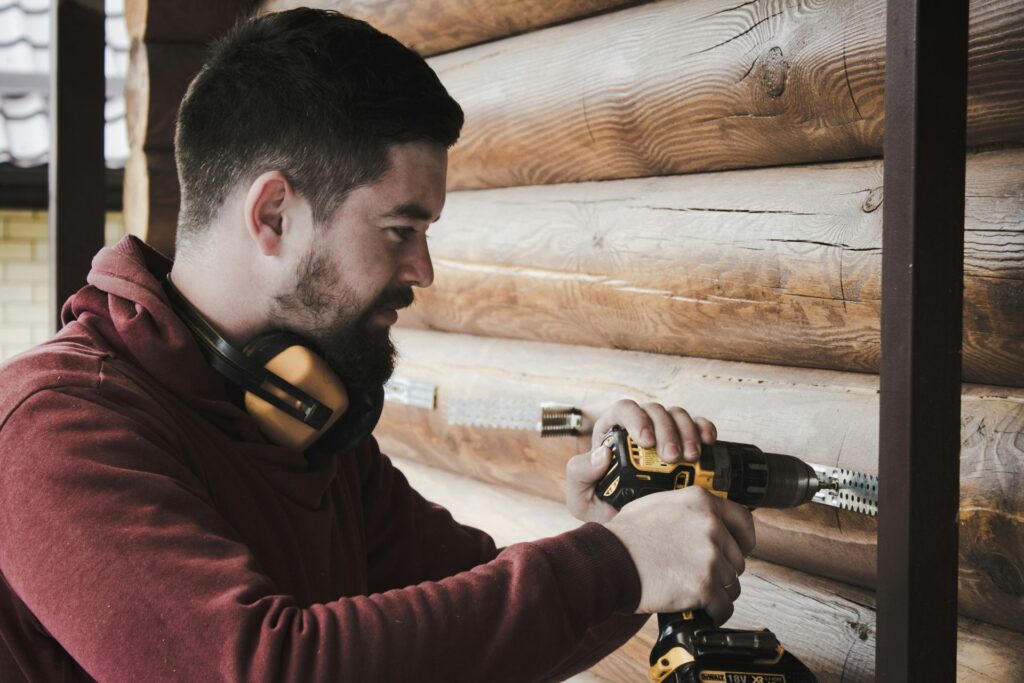
We are reader-supported. When you buy through links on our site, we may earn an affiliate commission.
Those who work in the construction industry have to follow jobsite safety rules to ensure they know what to do to prevent workplace accidents and treat them. However, you’re probably the typical weekend home improvement warrior who doesn’t consult a manual before tackling gutter cleaning.
Mayhem can strike anyone doing construction, causing serious injury or worse. Your risks increase when you don’t take the right precautions when using power tools or climbing scaffolds. Here are six job site safety rules that all DIYers should know before undertaking their next project.
1. Wear the Right Safety Gear
Do you have a hard hat in your garage? If you don’t, you’re missing one of the most critical pieces of gear for any project where you could fall or have overhead falling objects strike you.
Hard hats come in two types and three classes. Many DIYers can get away with a Type 1, Class C, which only protects injuries to the top of the head and offers no electrical resistance. However, those with two or 3-story homes or performing electrical work may want to upgrade.
Your brain bucket isn’t the only thing you need to protect. Activities like welding and sawing can spew sparks and metal shavings into your eyes unless you wear the right goggles.
Furthermore, some chemicals can burn your lungs and damage your internal organs. The right respirator mask protects you from toxic fumes.
2. Secure Your Ladders
Falls remain the number one cause of job site injuries among construction workers. Many problems result from people standing on the top rungs of ladders or using insecure scaffolding.
Please ensure all ladder legs remain braced securely against the ground before climbing — no wiggles or wobbles. Ensure your equipment adheres to OSHA requirements, including sufficient guard rails to avoid accidental falls when erecting scaffolding.
Additionally, ensure you know how to climb correctly. You should maintain three points of contact at all times — no balancing on the top rung to hold a 3rd story piece of gutter pipe in place by yourself. Hire the help you need if it’s unsafe to tackle a chore alone.
3. Turn Off the Power
You might not plan on rewiring your home. However, a careless wire cut could trip your circuit breaker, requiring you to drill a larger hole in your drywall to repair the damage. It’s even possible that grazing a wire could spark a fire.
Some projects nearly always require an expert’s touch. For example, converting from an electric to a gas stove requires both utilities to function properly, meaning that your best bet is a reliable contractor. Adding a 220 line is another reason to call in the professionals. Unless you’re a certified electrician, you’re probably better off contacting licensed help for any home’s wiring project.
4. Call 811
You don’t want to be responsible for hitting a utility line and causing your neighbors to lose power for hours, perhaps longer — especially during extreme weather. Worse, you don’t want to hit a gas main and create a severe environmental and fire hazard.
Your solution? Call 811 before embarking on any project that requires digging around your property, such as installing a deck or digging a pool or a pond. Most jurisdictions require you to take this step or face liability for harm resulting from your negligence. The amount of advanced notice you need to give before starting your DIY job varies.
You need advance notice because your municipality will send workers to your home to identify underlying utility lines and mark them. Once they do, you’ll need to dig around them to ensure safety.
5. Mind the Sharp Edges
Heavy machinery mishaps also cause considerable numbers of industrial accidents each year. However, many DIYers suffer similar injuries from household equipment because they fail to take the proper safety precautions. For example, you should never use your legs to support a board while trimming the edge with a circular saw — but people have ended up in the hospital.
Read the instruction manual for all power equipment before using it. Ensure you feel comfortable with all the operating procedures, particularly employing the safety mechanisms.
Wear heavy-duty work gloves and boots while operating chainsaws and other power tools that could fall on an unhappy foot. They’ll protect you from lost toes — and prevent broken bones. Even a 3-pound weight can shatter your phalanges, leaving you limping.
6. Stay Alert
Home improvement projects and brewskis go together like baseball and hot dogs. However, it’s important to maintain a clear head while performing DIY projects.
Please save your indulgences for after you complete your project. Even a 0.08 blood alcohol content — the legal limit — can cause a 120-second delay in response time. Those critical moments could make the difference between you and someone you love getting hurt.
Jobsite Safety Rules for DIYers
Construction professionals have a safety advantage over the DIY set. They participate in routine job site training that teaches them to prevent and respond to emergencies.
However, the home improvement set can suffer life-changing injuries like their certified counterparts. Following these six job site safety tips for DIYers can make your next project a success, not a disaster.










